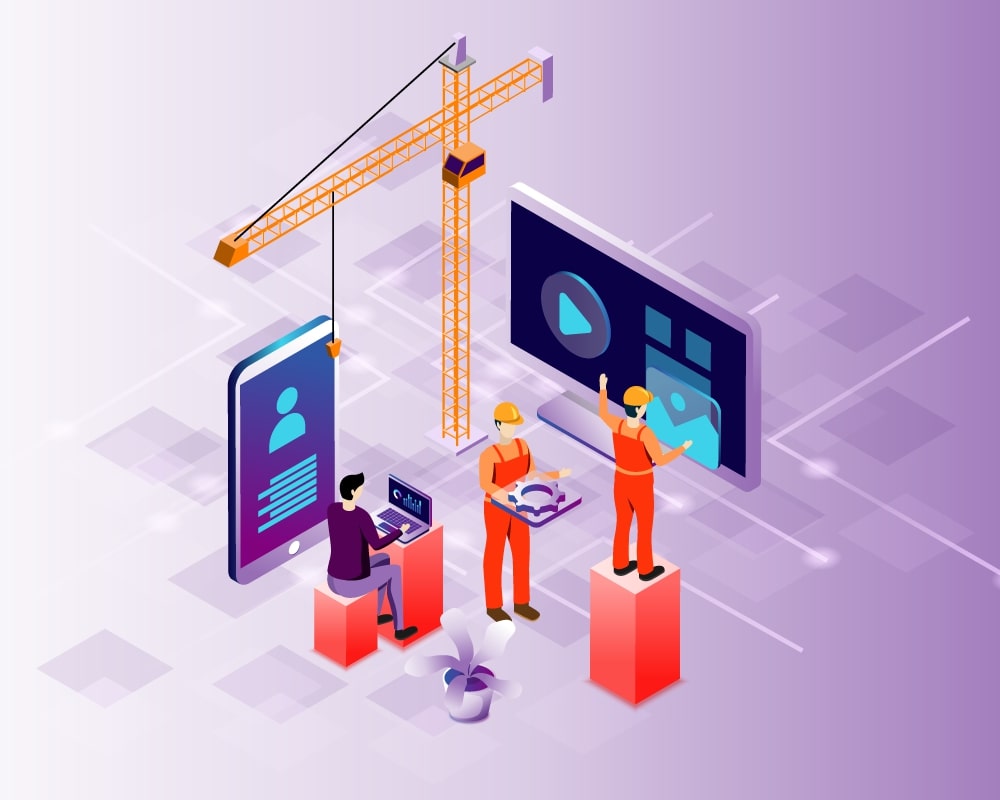October 4, 2021 By: Sumit Kothiyal
The term low-code development platform has been steadily gaining traction in the business world. It seems like every software funding and product announcement these days includes some sort of reference to “low-code or no-code” platforms or functionality.
The frequent reference to this catchy term over the last couple of years reflects a realization that we’re entering a new software era. Low Code-No Code platforms have enabled programmers and non-programmers to build application software by using graphical user interfaces and configuration rather than conventional computer coding. This visual approach uses a simple, responsive interface and helps in automating every step of the application. Low code platform can be used with no formal knowledge of software development as it uses simple logic and drag-and-drop components.
As per Gartner, “by 2024, low-code application development will be responsible for more than 65% of application development activity.” Quite a few businesses have started to realize the potential of these platforms and are actively using them in their digital transformation journey.
How Does a Low Code Platform Work?
Low code works on features like visual modeling tools, drag and drop, scalability, cross-platform accessibility, reusability, lifecycle management, heightened functionality, and security. Low code works in Visual Basic IDE (Integrated Development Environment) which facilitates the visual representation of the files and makes them comprehensible for the user. Visual IDE simplifies the software development process through compilers, debuggers, code completion tools, source code editors, and graphical designers.
- Low code uses a drag and drop interface which allows the user to simply select the feature and drag it into their project.
- Low code platform is dynamic and can easily adapt to changing business environments while developing an application for your business.
- LCP enables the usage of the same applications across multiple channels, hence facilitates the reuse of technology as per requirement.
- LCP also acts as an application lifecycle manager by organizing and examining the product, conducting assurance tests, and enhancing the product over time.
- LCP renders out-of-the-box functionality which facilitates several updated modules to guide application development, data management, etc. for customer-facing apps.
- Security is crucial for an application development platform irrespective of its user-friendly features. LCPs are equipped with security features that prevent your applications from being compromised.
- Furthermore, the platform eliminates the need for creating frameworks, linking databases, and other tasks that are typically included in traditional development. It also reduces the gap between business and IT, as both teams are working together to solve a real business need.
And most low-code platforms also offer readymade applications that can be installed and customized based on user requirements.
No-Code vs Low-Code
No-code and low-code are pretty similar concepts and is often used interchangeably. Although no-code uses some of the similar visual and other features, no code can be used to develop extremely simple applications, whereas low code is used by developers to develop sophisticated applications.
- They both use technology to create software applications with little to no coding.
- They both use existing frameworks and APIs (application programming interfaces) to help people create the features and functions they want.
- They both help businesses build enterprise applications.
| No-Code Development | Low-Code Development |
|---|---|
| No-code allows you to create functional applications without using a single piece of code. | Low-code uses an existing framework as your baseline, but you can use additional coding to create responsive apps. |
| You don’t need any understanding of coding and scripting. | You need a little understanding of coding and scripting. |
| It’s designed primarily for front-end users who have no coding experience. | It offers more customization. |
| It helps businesses with rapid application development. | It helps businesses create apps quickly, but adding the custom code may slow down the process slightly. |
The Promise of Low-Code
Low code can be used to build customer engagement apps, AI -bases solutions, and optimization apps. According to research on key criteria for evaluating low code/no-code solutions by Michael Delzer and Jon Collins.
- Low-code can be used across multiple platforms such as service management, data management, RPA, and workforce automation.
- The capability of the platform is expected to broaden, hence enabling faster customization of application and service platforms.
- The researchers also suggest that citizen developers must work closely with the engineers to achieve robust and secure applications.
- Citizen developers play multiple roles in an organization and implementing low code tools can foster organizational growth and multiply digital transformation initiatives.
- LCP also accelerate productivity and scale the app development process, thus enabling citizen developers to complete their task faster, and with minimal resources.
Low Code – The Future of Application Development
According to Gartner, the low code market is estimated to reach over $13 billion by the end of 2021. By 2030, the global low code development platform market would generate a revenue of $187 billion, according to Research and Markets LCP provides the right solution to streamline your digital goals and combine visual development with AI capabilities and high productivity. The LCP not only enables businesses to develop applications faster but also the right ones for the future.
JK Tech’s strategic partnership with Mendix enhances your transformation journey as we help you build the most innovative and agile applications using the Mendix platform with our dedicated and certified professionals. Our clients can expect the best applications that exceed your business expectations with rapid developments and industry-leading solutions.



